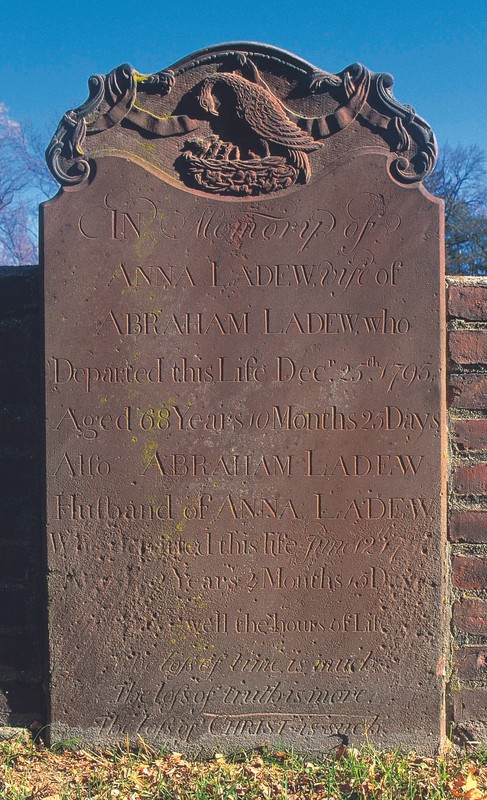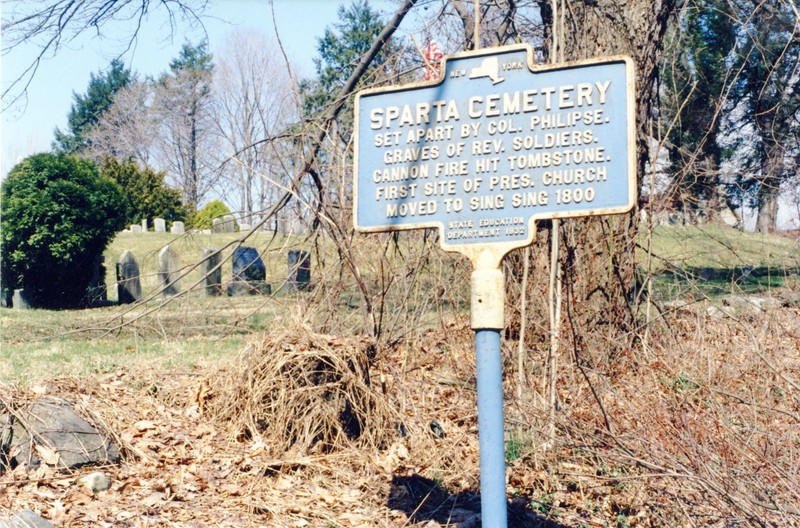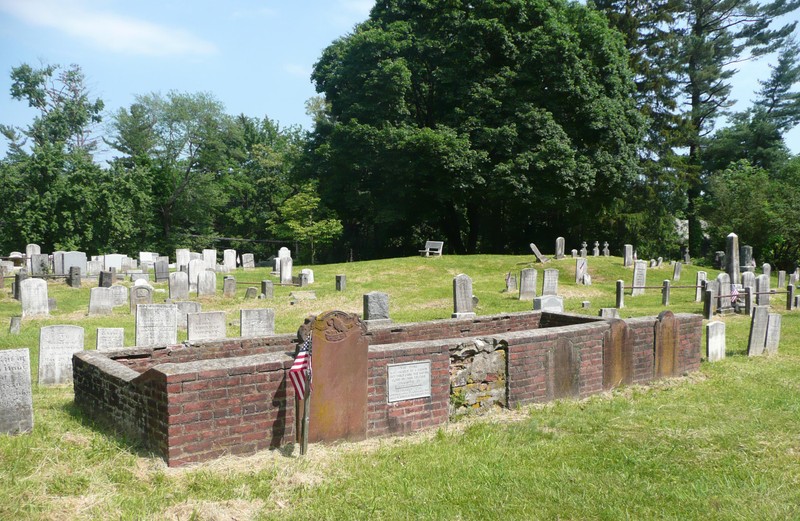This entry includes a walking tour! Take the tour.
Introduction
Text-to-speech Audio
The oldest burial ground in the Town of Ossining, Sparta Cemetery was established before the Revolutionary War as the burial place for a Presbyterian congregation that is now called the First Presbyterian Church of Ossining. The land on which the cemetery is located was given to the Presbyterians by Frederick Philipse, lord of Philipsburg Manor. The earliest known burial in the cemetery dates to 1764, while the most recent interment was made here in 2007. The cemetery contains an interesting collection of sandstone and marble tombstones that mark the graves of some of Ossining's early residents.
Images
Tombstone of Anna and Abraham Ladew in Sparta Cemetery.

New York State historic marker at Sparta Cemetery.

The Ladew family plot in Sparta Cemetery.

Backstory and Context
Text-to-speech Audio
Prior to the outbreak of the Revolutionary War, all of the present Town of Ossining was part of Philipsburg Manor. Frederick Philipse, lord of the manor, gave a parcel of land to the Presbyterians living in the Ossining area to serve as a location for a church and burial ground. The congregation built a church on the west side of this two-acre parcel along what is now called Revolutionary Road in 1768, and used the remainder of the property as a burial ground. The first identifiable interment in the cemetery, that of Sarah Ladew, was made in 1764. Sarah's tombstone, as well as several others that mark the graves of her relatives, have been inserted in a brick wall that surrounds the Ladew family plot. This wall was constructed by the executors of the estate of her father, Abraham, who left a stipulation in his will directing that them to build this enclosure.
When Westchester County was divided into towns in 1788, Sparta Cemetery became part of the Town of Mount Pleasant. As such, the Presbyterian congregation that owned the cemetery took the name of the Presbyterian Church of the Town of Mount Pleasant. In 1803 the congregation moved to a new house of worship closer to the growing area that would become downtown Ossining, and the old church was moved across the street from Sparta Cemetery where it was used as a tavern and a home. The Town of Ossining was separated from the Town of Mount Pleasant in 1845, and the Presbyterian congregation would take the name of the First Presbyterian Church of Ossining.
The opening of Dale Cemetery in 1851 would signal a decline in the number of burials made at Sparta Cemetery, as families preferred to buy plots in the new rural cemetery. However, interments still continued to be made at Sparta Cemetery. Perhaps the most notable burial in the cemetery is that of the Leatherman, who traveled throughout the Hudson Valley and Connecticut wearing a suit of leather during the mid-to-late 19th century. The Leatherman died in a cave in Ossining and was buried in a pauper's grave near the southeast corner of the cemetery.
At the northwest corner of Sparta Cemetery is a small enclosed plot that was established as a family burial ground by James Boorman, who gave the name of Scarborough to the railroad station near Sparta along the Hudson River Railroad. When Boorman established this plot in the 1860s, it was a separate burial ground from Sparta Cemetery, and remained so until 1927 when the Boorman family deeded the parcel to the First Presbyterian Church of Ossining.
In the 1939 the Ossining Historical Society assumed responsibility for maintaining the Sparta Cemetery with financial support from the First Presbyterian Church of Ossining. In 1984 the church transferred ownership of the cemetery to the Ossining Historical Society, which in turn transferred ownership of the cemetery to the Town of Ossining in 2014. Restoration work, tours and workshops are conducted in the cemetery by the Ossining Historic Cemeteries Conservancy. Sparta Cemetery was added to the National Register of Historic Places as part of the Scarborough Historic District in 1984.
Sources
Mesiti, Martha. Final Resting Place, Ossining Historic Cemeteries Conservancy. Accessed May 15th 2020. https://www.ossininghistoriccemeteries.org/sparta-cemetery.
Raftery, Patrick. The Cemeteries of Westchester County.. Volume II. Elmsford, NY. Westchester County Historical Society, 2011.
Williams, Gray. Picturing Our Past: National Register Sites in Westchester County. Elmsford, NY. Westchester County Historical Society, 2003.
Westchester County Historical Society. Photo by Gray Williams.
Westchester County Historical Society.
